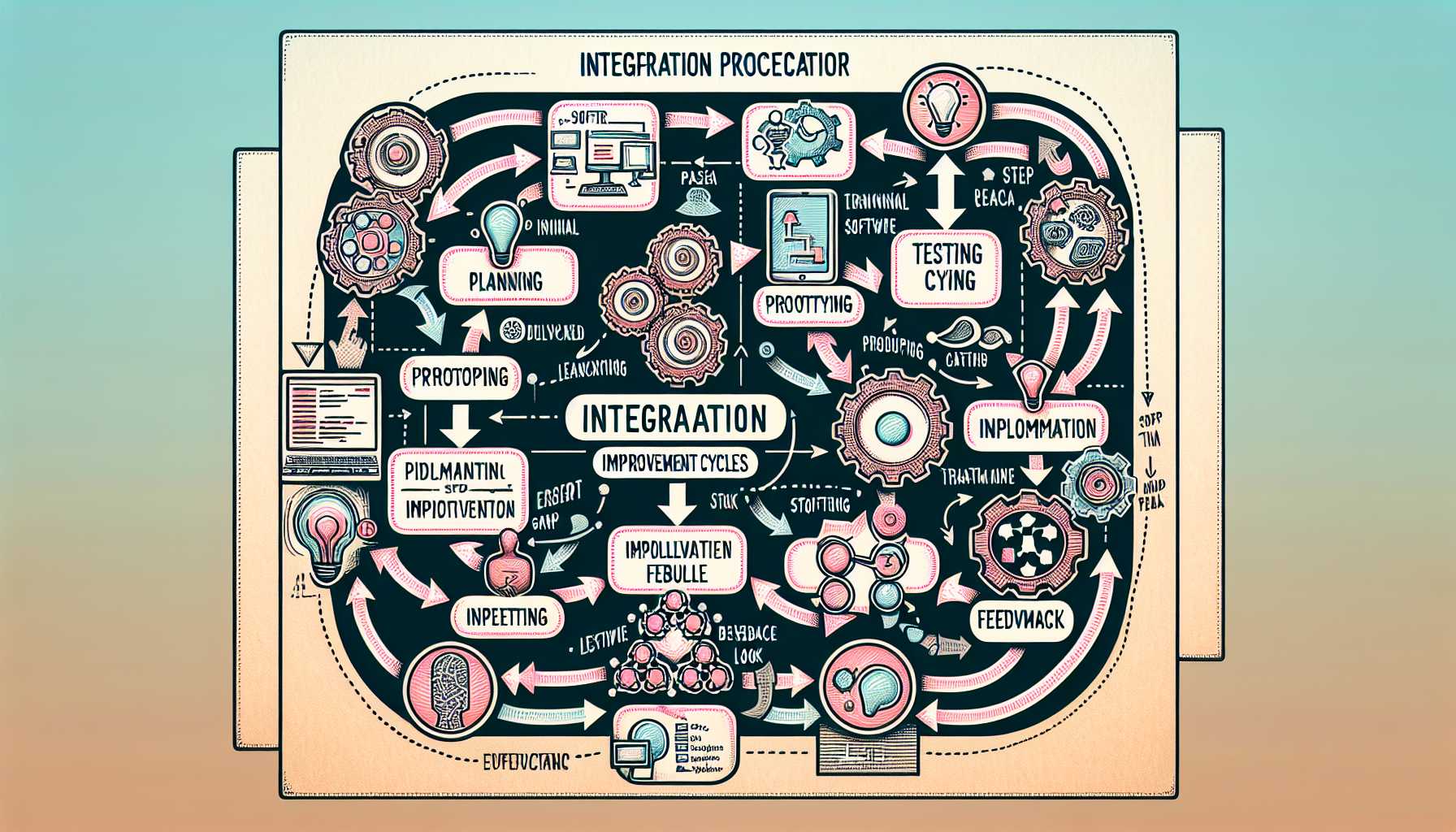Integrating AI and ML into Software Product Development: A Practical Guide
Welcome to the latest edition of our product management exploration. The buzz around Artificial Intelligence (AI) and Machine Learning (ML) is deafening, and for a good reason. These technologies have the potential to revolutionize how we build and improve products. Today, I’ll discuss my experiences in integrating AI and ML into software product development, drawing on the frameworks and strategies I’ve used over the years.
Framing AI/ML Integration in Product Development
Integrating AI and ML isn’t a plug-and-play affair; it requires strategic thinking and a clear understanding of its implications for your product. In one of my previous roles, tasked with enhancing a consumer recommendation engine, we had to decide on the degree of ML integration that would benefit both our users and our business.
Starting with the Why: Aligning AI/ML to Business Needs
The integration of AI and ML should start with a clear understanding of ‘why.’ You need to identify the business problems you’re solving or the customer needs you’re addressing. For us, it was about improving user engagement and tailoring recommendations, which directly tied to our revenue through increased user retention and conversion.
Choosing the Right Problems for AI
AI projects should be embarked upon with caution. Not every problem requires an AI-based solution. Predictive analytics, natural language processing, and image recognition are examples where AI/ML have a clear edge. Hence, we focused on leveraging ML for its predictive capabilities in user behavior to enhance our recommendation system.
Building an AI-competent Team
One vital aspect of integrating AI/ML into product development is ensuring that you have the right team in place. This doesn’t just mean hiring data scientists and ML engineers; it also implies upskilling your existing team to understand the basics of AI/ML. Cross-functional collaboration between product managers, data scientists, and engineers is critical for success.
Adopting a Phased Approach to AI Integration
In introducing AI to an existing product, I advocate for a phased approach. Beginning with a minimal viable model (MVM) helps in understanding how the AI/ML model performs with real-world data. This was the strategy we employed, and it served as a proof of concept, giving us actionable feedback early in the process without committing extensive resources.
Building, Monitoring, and Iterating AI Models
AI/ML models are not “set and forget.” Continuous monitoring and iteration are vital, as models can drift over time. Implementing model performance tracking mechanisms and having a human-in-the-loop to oversee the process is essential. My experience with the recommendation engine taught me the value of iteration. We continually refined the model based on user interaction data, which ultimately led to a better product experience.
Quantifying the Impact of AI
Measuring the impact of AI/ML on your product is as crucial as the implementation itself. Key performance indicators (KPIs) should be defined beforehand to gauge success. For us, KPIs included user engagement metrics and increased sales directly attributable to the improved recommendations.
Understanding Ethical Considerations
AI and ML raise significant ethical concerns, including bias and privacy. Ethical AI frameworks serve as guides to ensure that these issues are addressed proactively. Establishing clear guidelines for ethical use within your team and across your organization is a non-negotiable aspect of AI/ML integration. In our case, model transparency and user data privacy were key considerations that we rigorously maintained.
Scaling and Future-proofing Your AI Investment
Scalability and maintenance are two critical factors often overlooked in the excitement of AI/ML integration. Scaling an AI solution requires both infrastructure and a plan for maintenance, which should be developed simultaneously with model development. Throughout my career, investing in scalable infrastructure and establishing procedures for ongoing maintenance have been pivotal steps.
Final Thoughts
AI and ML can offer a competitive edge, drive efficiency, and improve user experiences. However, their integration should be a carefully considered strategic decision. Begin with a clear understanding of ‘why,’ ensure you’ve got the right problems and the right team, and embrace a phased, iterative approach. Measure impact rigorously and stay committed to ethical principles.
AI/ML are no silver bullets, but with intentional planning and execution, they can indeed be the catalysts for transformative product experiences. I hope my experiences and insights aid you on your journey of integrating these powerful technologies into your products.
Thank you for stopping by, and I look forward to sharing more thoughts with you in future posts.

